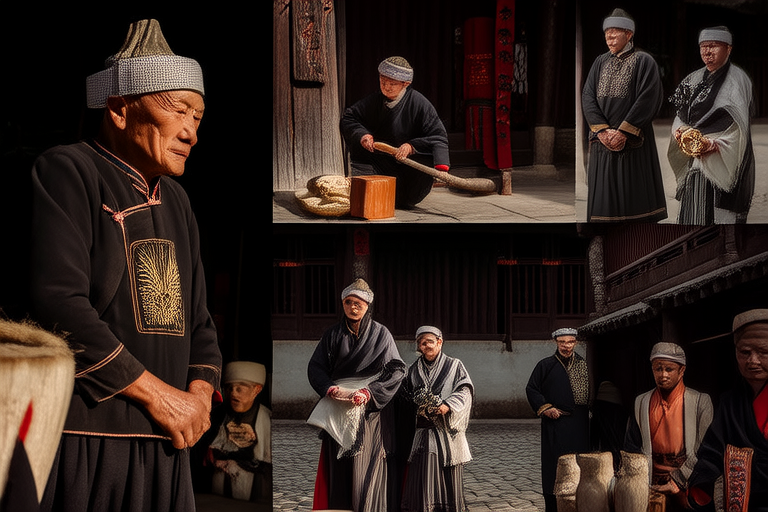Local Lore and Legends: Uncovering Hidden Cultural Customs

Local Lore and Legends: Uncovering Hidden Cultural Customs
Introduction
Local lore and legends are the rich tapestry of stories, myths, and customs that define the cultural heritage of communities worldwide. These narratives are not merely entertaining tales; they serve as vital conduits for passing down beliefs, values, and traditions from one generation to the next. Through these stories, communities can maintain a strong sense of identity and unity. This article aims to delve into the significance of local lore and legends, exploring how they preserve cultural customs and reveal hidden aspects of cultural heritage.
The Role of Lore in Cultural Preservation
Oral traditions have long been the primary means of transmitting cultural knowledge. Passed down through generations, these stories encapsulate the collective wisdom, experiences, and moral lessons of a people. In many indigenous cultures, such as the Maori of New Zealand or the Native American tribes of North America, oral storytelling is central to their identity and social structure. These narratives not only entertain but also educate, offering insights into the history, spirituality, and daily life of the community.
However, the modern world poses significant challenges to these oral traditions. The rise of digital media and global communication networks has sometimes overshadowed the importance of local lore. Yet, there are efforts to revitalize these traditions. Community-based projects, educational programs, and digital archives are helping to preserve and promote these invaluable stories. By embracing these initiatives, we can ensure that the voices of the past continue to resonate with future generations.
Exploring Local Legends
From the myth of the Minotaur in ancient Greece to the legend of the Loch Ness Monster in Scotland, local legends captivate our imagination and offer profound insights into the cultural psyche of a region. Let us explore some fascinating legends from around the world:
The Legend of El Dorado
Originating in South America, the legend of El Dorado tells of a golden city hidden deep within the Amazon rainforest. This mythical land was said to be ruled by a king who covered himself in gold dust during religious ceremonies. While no physical evidence of El Dorado has ever been found, the legend has inspired countless expeditions and explorations, reflecting the human desire for discovery and wealth.
The Tale of Baba Yaga in Slavic Folklore
In Slavic mythology, Baba Yaga is a witch who lives in a hut that stands on chicken legs. Her character embodies the duality of good and evil, often serving as a guide or obstacle for protagonists in folktales. The story of Baba Yaga reflects the Slavic belief in the interconnectedness of nature and the supernatural, as well as the importance of respect for the natural world.
The Curse of the Wandering Jew
Originating in Europe, this legend tells of a man who mocked Jesus Christ on his way to crucifixion and was cursed to wander the earth until the Second Coming. The tale has been adapted and retold across various cultures, symbolizing the consequences of hubris and the inevitability of divine justice.
Hidden Cultural Customs Revealed
Beyond the well-known festivals and rituals, there exist numerous lesser-known customs that are integral to the cultural fabric of communities. These hidden practices often provide unique insights into the values and traditions of a people:
The Bonfire Night of the Iroquois
The Iroquois people of North America celebrate the Bonfire Night, a ritual that marks the end of winter and the beginning of spring. Participants gather around a large bonfire, sharing stories and songs while offering prayers for health and prosperity. This custom highlights the Iroquois’ deep connection to nature and their belief in the cyclical nature of life.
The Lantern Festival in Vietnam
The Lantern Festival, celebrated annually on the 15th day of the first lunar month, features elaborate lantern displays and communal feasts. This festival not only celebrates the arrival of spring but also honors ancestors and expresses gratitude for the previous year’s harvest. The vibrant lanterns symbolize hope and light, guiding the spirits of the deceased back to the living world.
The Secret of the Kava Ceremony in Fiji
In Fiji, the kava ceremony is a sacred ritual involving the consumption of kava, a traditional drink made from the roots of the kava plant. During the ceremony, participants sit in a circle, sharing cups of kava as a sign of respect and unity. This practice fosters social harmony and reinforces the bonds within the community.
The Impact of Tourism on Local Lore
Tourism can have both positive and negative effects on the preservation of local lore and legends. On one hand, it raises awareness and appreciation for these cultural treasures, encouraging visitors to learn about and participate in local traditions. However, it can also lead to the commodification of these practices, turning them into mere spectacles for entertainment.
To mitigate these risks, many communities have implemented responsible tourism initiatives. These programs focus on educating tourists about the cultural significance of local practices and ensuring that economic benefits are shared equitably among community members. By fostering mutual respect and understanding, these initiatives help to preserve the authenticity and integrity of local lore.
Conclusion
Local lore and legends play a crucial role in maintaining cultural diversity and identity. They offer a window into the past, allowing us to understand the beliefs, values, and traditions that shape communities. By uncovering hidden cultural customs, we can gain a deeper appreciation for the richness and complexity of human experience.
We encourage readers to seek out and learn about the hidden cultural customs in their own communities or when traveling. Engaging with these traditions not only enriches our personal lives but also supports the efforts of communities to preserve their invaluable heritage. Let us all play a part in safeguarding these treasured stories for future generations.